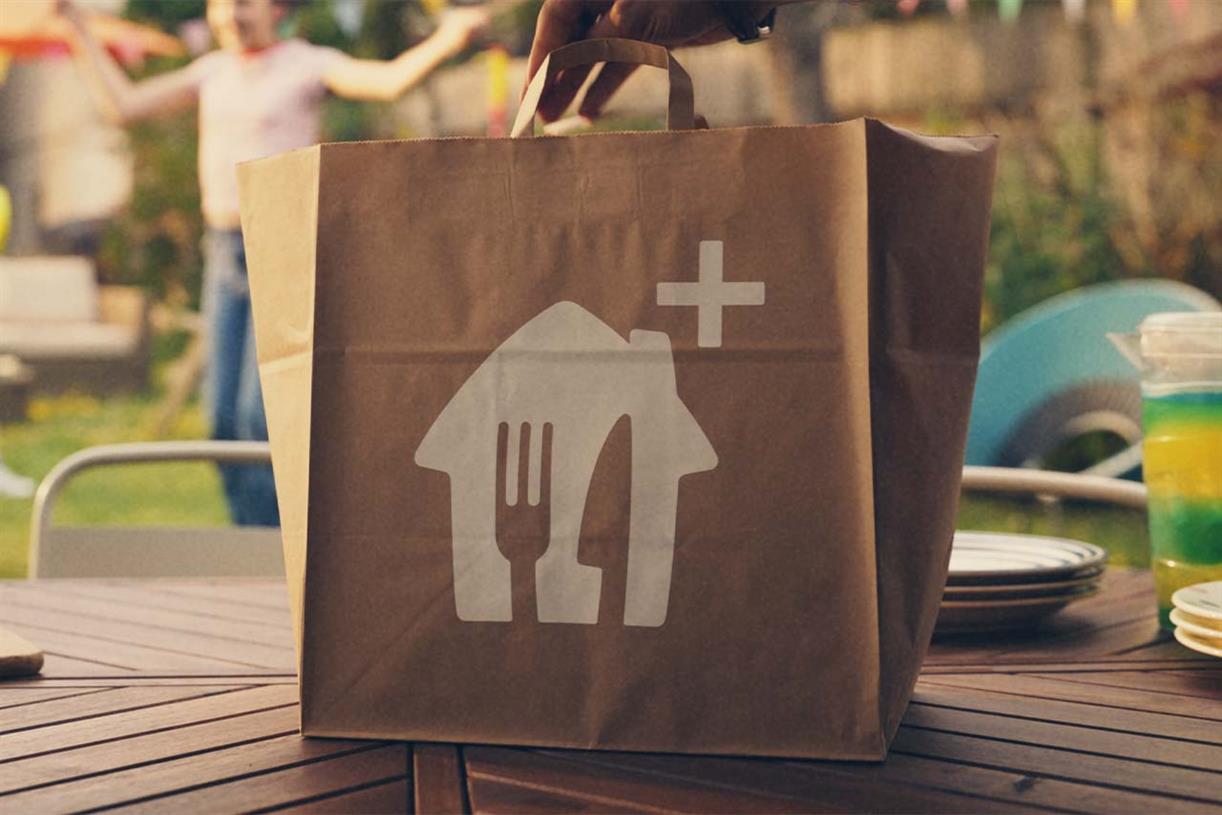Samsung Galaxy Z Fold 5 review: a little better is just good enough
Samsung’s head start in foldables is paying off, but it’ll have to do more next time around to stay in front. Continue reading…
/cdn.vox-cdn.com/uploads/chorus_asset/file/24840077/DSC05301_processed_alt.JPG)
It’s easy to measure the difference between the Samsung Galaxy Z Fold 4 and the Z Fold 5: two millimeters.
Or 2.4mm, to be exact. At its thickest point, last year’s Z Fold 4 measures 15.8mm when folded — the Z Fold 5 uses a new hinge to fold totally flat and measures 13.4mm thick. It’s a bit lighter, the inside screen gets a bit brighter, and it includes this year’s flagship Qualcomm processor. And that’s about it.
Samsung isn’t pushing the envelope here — it’s nudging it forward by the tiniest margin. It’s certainly not the phone that will truly take foldables into the mainstream. There’s still no dust resistance, it’s still a relatively heavy device, and at $1,800, it still costs a small fortune. These are all major barriers when you consider that any current slab-style flagship will be lighter, more durable, and cost at least $600 less than the Fold 5. If you weren’t convinced by the Fold 4, then you shouldn’t feel any differently about the Fold 5.
Of course, the Galaxy Z Fold 5 is also entering the chat with one thing the Fold 4 didn’t have at launch: meaningful competition. We’re no longer just measuring Samsung’s new foldable phone against the old one — it needs to compete with the Google Pixel Fold. And it does — overall, it’s the better foldable phone. But it’s mostly a winner by default; it’s good because the Z Fold 4 was already good.
That’s not to say that the Z Fold 5 is miles ahead of the Pixel Fold — the Pixel’s camera is stronger overall, and its landscape-first orientation has advantages over the portrait-oriented Z Fold 5. It’s especially noticeable when you’re using the cover screen with the phone closed for, you know, normal phone stuff.
But open up the Z Fold 5, and you’ll see why it’s still ahead, despite Google’s best efforts. Multitasking is seamless, and Samsung has spent the past few years engineering clever little software workarounds to help the phone contend with a mobile world built for smaller screens. The Fold 5 — like the Fold 4 — is an impressive little machine. Just be prepared to pay up.
The gapless wonder.
Is the Fold 5 thinner and lighter than the Fold 4? Technically, yes. Does that make a noticeable difference in using the phone? Not really. It’s more of an aesthetic effect than anything. To its credit, the Fold 5 is significantly lighter than the Pixel Fold, but it’s still a chunky, relatively heavy device. It’s 13 grams heavier than an iPhone 14 Pro Max — a hefty device in its own right — and a full 80 grams heavier than a standard iPhone 14. It’s not just the weight, either — it’s how that weight is distributed.
It still feels a little like using a TV remote as a phone
The Fold 5 is dense when it’s closed, and using it folded closed for a long time can get a bit uncomfortable — I notice the weight on my pinky finger more than when I use a typical slab-style phone. It also looks objectively ridiculous when I carry it in the side pocket of my yoga pants. The weight is better distributed with the phone open, but that’s a two-handed affair for sure. If you’re attached to the idea of using your phone in one hand, then this probably isn’t the device for you. But to its credit, the Z Fold 5 is appreciably lighter than the Pixel Fold and a bit more comfortable to use when it’s closed.
The outer screen’s long and skinny dimensions are roughly the same as on the Fold 4, which is to say it still feels a little like using a TV remote as a phone. I notice this most frequently when I’m typing — I have to concentrate harder than usual on tapping the right keys since they’re so narrow. Related: Samsung owes me restitution for the Duolingo question that I blew because I hit the enter key when I was aiming for the backspace. Removing the number row and making the keyboard taller helps a little, but that only makes the keys about as big as they are on an iPhone 13 Mini.
The long-and-narrow outer screen doesn’t offer the best typing experience.
The 7.6-inch inner display is the same size and almost square shape as last year’s screen. The crease is no more or less pronounced than it was on the Fold 4, and you generally don’t see it when you’re using the phone unfolded. It now offers a peak brightness of 1750 nits, so it’s easy to use even in direct sunlight, something the Pixel Fold struggles with — and, speaking from experience, definitely bright enough to use while sitting on the shaded patio of your favorite coffee shop.
And even on a hot day in peak patio season, the Snapdragon 8 Gen 2 chipset powering the Fold 5 didn’t get too warm. It handled about half an hour of gaming and some lighter tasks without warming up to the point of impacting performance.
Samsung’s software updates are incredibly minor — it’s easier to drag and drop content from one app to another or organize the apps on your homescreen. But the fact is, multitasking on the big screen was already pretty damn good, and it remains so on the Fold 5. I can set up a multi-window view with Instagram on one half and the other split between Slack and a timer to keep an eye on work messages while I’m taking a break. I can also save this configuration to the homescreen, taskbar, or app side panel, so I can access it again quickly. These things are just not currently possible on the Google Pixel Fold, and they’re the kinds of features that really make the Fold 5’s big inner screen sing.
The Galaxy Z Fold 5 is often more powerful than the mobile ecosystem it lives in
The Galaxy Z Fold 5 is often more powerful than the mobile ecosystem it lives in and is occasionally hamstrung by buggy Android tablet apps and mobile web experiences that are gathering dust. I get up early most days to sort out my schedule, and one of the great joys with a cup of coffee on Monday morning is bulk deleting emails from my Gmail promotions tab.
The tablet configuration of the Gmail app looks great on the Z Fold 5’s inner screen — two columns with a lovely modern UI when you rotate the phone to landscape. But you can’t tap a checkbox to select all of the messages in an individual Gmail tab the way you can on the desktop interface, which is a problem when you want to yeet 500 promotional emails into the trash at once. So I went to Chrome and encountered… this screen.
Don’t yell at me to open your app, Google.
Have you seen the mobile web Gmail interface recently? Has anyone at Google seen the mobile web Gmail interface recently? It’s ugly as sin, and guess what? You still can’t select more than one email. So I switched to desktop mode, and it worked great. A few more taps and my inbox was squeaky clean.
This was just one of those scenarios where the Z Fold 5 is equipped to handle more than the typical mobile app allows — a not-infrequent occurrence. In fact, more than once, as I was using the Z Fold 5 in tablet mode, I remembered I needed to send a text or respond to a message and thought to myself, “I need to go get my phone.” It’s a neat moment when you remember that the device in your hands isn’t just a big screen for playing games and doing your Spanish lessons — it’s also the thing you use to text your mom.
Work on your Spanish or browse Spotify? ¿Por qué no los dos?
Even with all of these multitasking and big-screen experiences at your disposal, the Z Fold 5’s battery can last a full day of heavy use without requiring a midday recharge. I managed over five hours of screen-on time and still had about 10 percent left by bedtime. With moderate use on other days, I usually had around 40 percent left in the tank. I obviously saw the battery drain faster using the inner screen for extended periods of time, but I never experienced the same oh-shit-I-better-recharge-now battery anxiety I felt after a morning of heavy use with the Pixel Fold.
The Fold 5’s new hinge certainly looks nicer, and Samsung says its design will handle impacts better than the previous one. Outside of that, there aren’t any other durability improvements to report. It’s still IPX8 rated, with the “8” signifying resistance against full water immersion and the “X” marking a big “nope” for dust resistance.
Samsung says it’s working on dustproofing its future models, and that would be a welcome development indeed. In the meantime, long-term durability is still a bit of a question mark, and using a folding phone in a dusty environment isn’t a great idea. At least in terms of software, the Fold 5 is built to go the distance: it’ll get four years of OS upgrades and five years of security updates — that’s one more OS upgrade than Google promises for the Pixel Fold.
Photo by Allison Johnson / The Verge
The Fold 5’s camera hardware is just okay, which is fine until you remember that this is a $1,800 phone. It’s the same triple rear camera array that Samsung’s been using in the past couple of generations of S-series phones, with a 50-megapixel stabilized main camera, a 10-megapixel 3x telephoto, and a 12-megapixel ultrawide. There’s a 4-megapixel under-display camera on the inside that’s passable for video calls as long as you’re in a well-lit location. But for Samsung’s very latest and greatest camera hardware, you’ll have to look at the Galaxy S23 Ultra, which is a full $500 cheaper.
The Pixel Fold doesn’t come with a show-stopping camera array, either, but at least you get a 5x telephoto lens. Pixel image processing is more consistent and predictable, too, and the Fold 5 comes with all the quirks I’ve come to expect from Samsung’s photo processing.
At times, it’s excellent, particularly if you like your colors on the punchy side. And I’ll take Samsung’s portrait mode over the Pixel’s every time. Samsung’s processing is often prone to the cardboard cutout look, especially with the wide-angle lens, but its telephoto portraits in good lighting are second to none.
Video recording is available at up to 8K/24p, which is cool if you have any way of looking at 8K video in your life. For the rest of us mere mortals, 4K and 1080p clips look plenty detailed and vibrant.
Hello, big screen.
Calling the Galaxy Z Fold 5 a better phone than the Fold 4 feels like a stretch — it’s marginally better at most. For most people, it’s probably not better than any of the countless slab-style phones you can buy for much less. The more interesting question is whether the Z Fold 5 is a better phone than the Pixel Fold. Generally, it is.
I think there is a significant subset of people interested in a folding phone that would be happier with the Pixel. If you prefer Google’s photo processing over Samsung’s or you strongly dislike the tall-and-narrow form factor of the Fold 5 when it’s closed, then you might be better off with the Pixel Fold.
Samsung may still have the lead in the foldable race, but the gap is closing
Overall, though, the Fold 5 comes out just ahead. It’s meaningfully lighter, which makes a difference when you’re using it folded for long periods of time. There are more multitasking options and ways to take advantage of that big inner screen, and battery life is better. Those aren’t huge differences, but they’re important ones when you’re talking about a folding phone you’ll want to get the most out of.
Samsung may still have the lead in the foldable race, but the gap is closing. If it wants to stay ahead, it’ll have to do more next year than just nip a few millimeters and pop in a new chipset. For now, though, that’s just enough.
Photography by Allison Johnson
Agree to continue: Samsung Galaxy Z Fold 5 and Z Flip 5
Every smart device now requires you to agree to a series of terms and conditions before you can use it — contracts that no one actually reads. It’s impossible for us to read and analyze every single one of these agreements. But we started counting exactly how many times you have to hit “agree” to use devices when we review them since these are agreements most people don’t read and definitely can’t negotiate.
To use the Samsung Galaxy Z Fold 5 or Z Flip 5, you must agree to:
There are many optional agreements. If you use a carrier-specific version, there will be more of them. Here are just a few:
There may be more. For example, Samsung’s Weather app also has its own privacy policy that may include sharing information with weather.com.
Final tally: there are five mandatory agreements and at least ten optional ones.

 Tekef
Tekef 
































